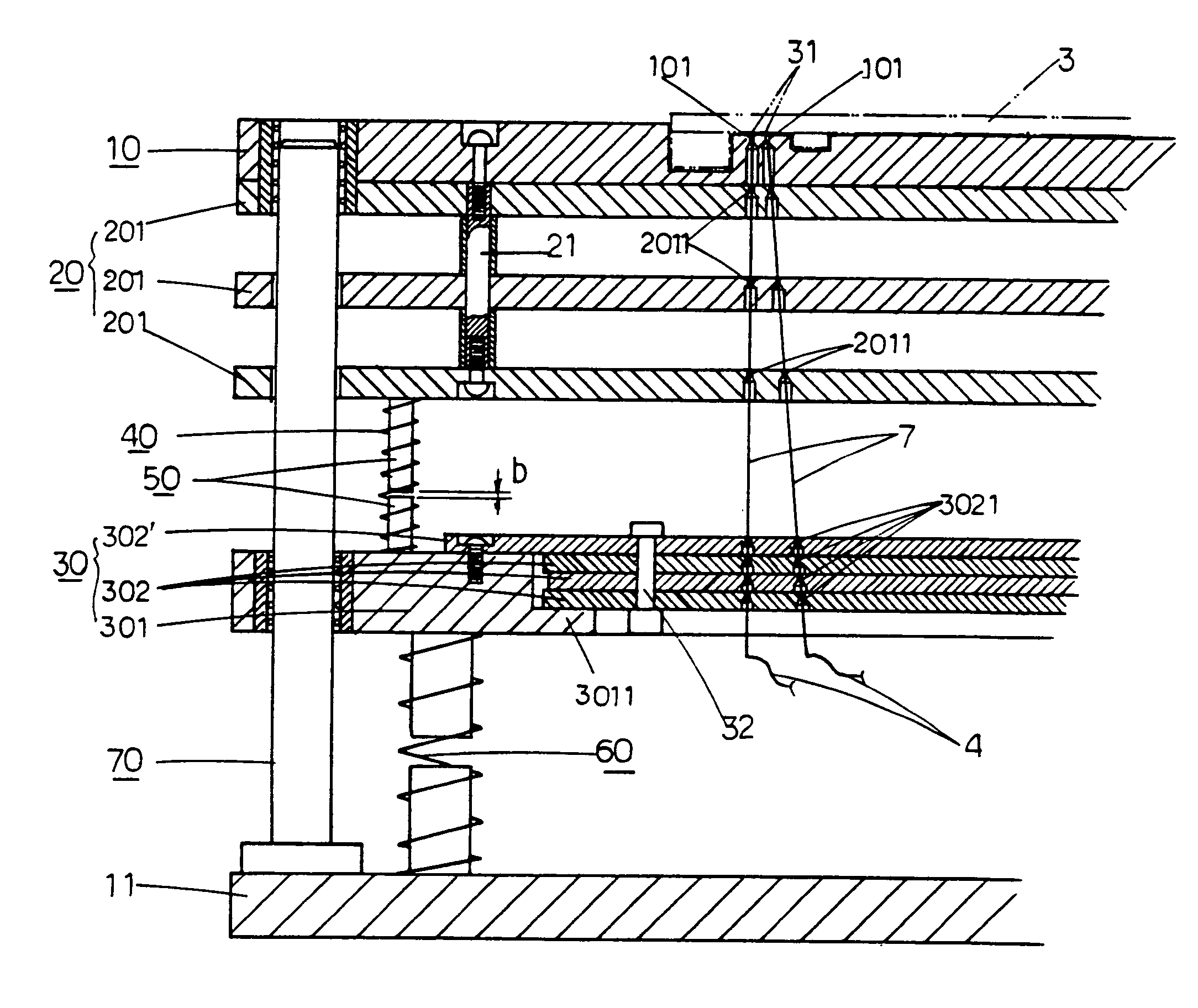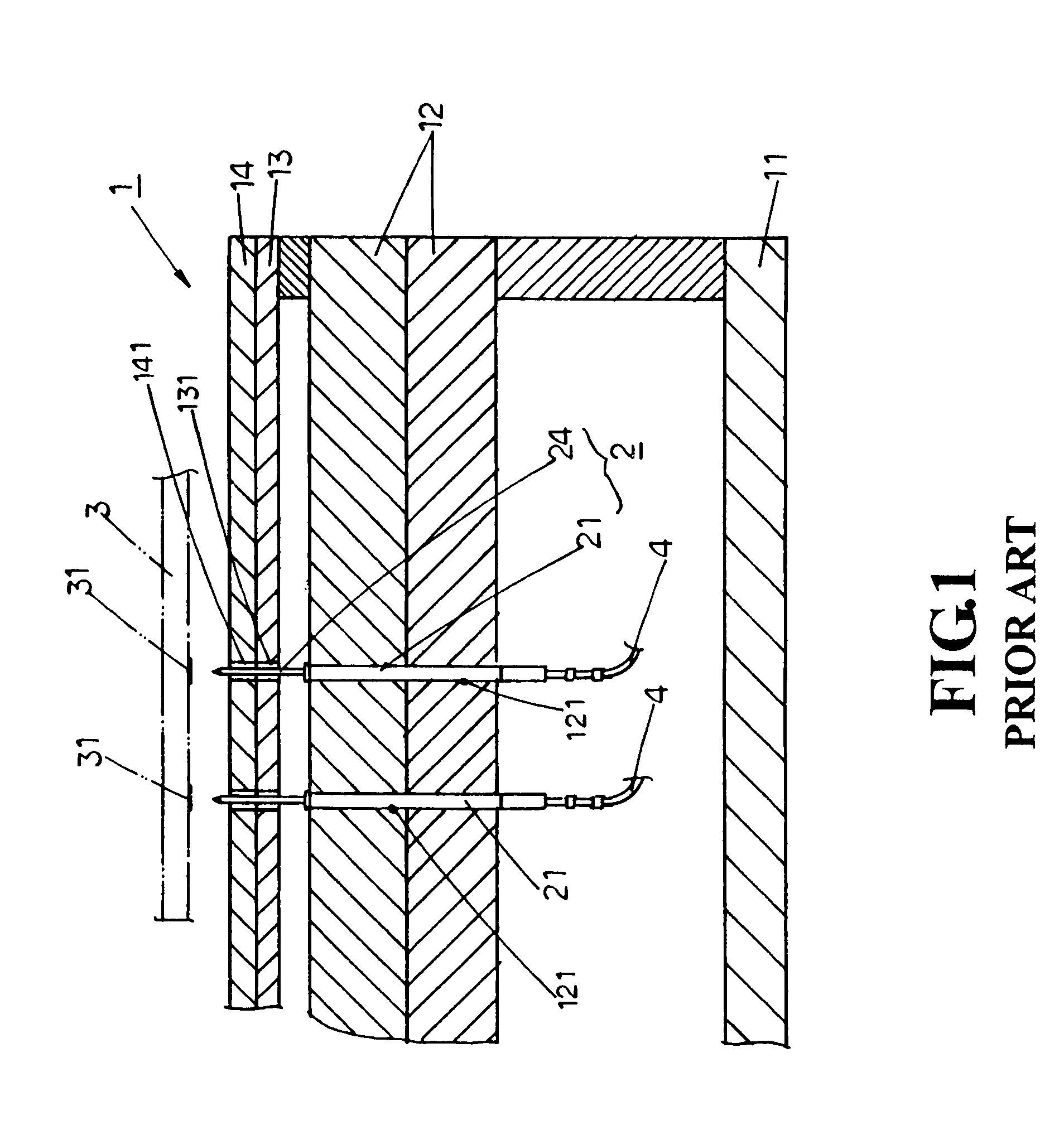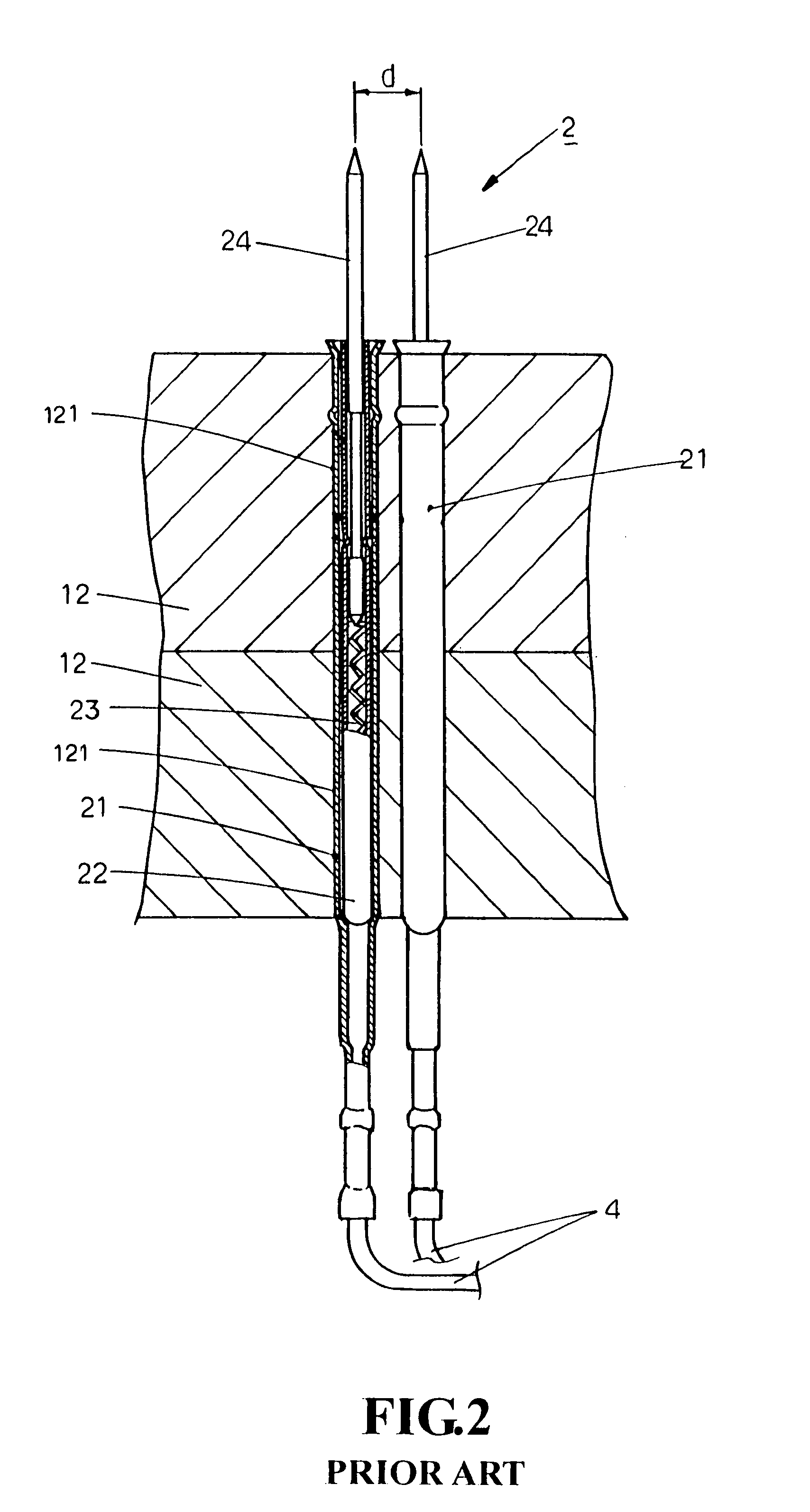Various electrical characteristics and small test point testing module
a testing module and electrical characteristic technology, applied in the direction of electronic circuit testing, measurement devices, instruments, etc., can solve the problems of inability to raise the testing density, and inability to test high density testing, so as to achieve the effect of increasing the testing stability, reducing the cost of testing, and increasing the testing density
- Summary
- Abstract
- Description
- Claims
- Application Information
AI Technical Summary
Benefits of technology
Problems solved by technology
Method used
Image
Examples
Embodiment Construction
[0032]Referring to FIG. 5 and FIG. 6, the various electrical characteristics and small test point testing module of the invention herein is comprised of a carrier plate 10, a guide correction layer 20, a clamp pin layer 30, a linear probe 7, a first cushioning component 40, a travel adjustment rod 50, a second cushioning component 60, a guide post 70, and a base 11, wherein a said guide post 70 is installed at the four corners of the base 11 and the said carrier plate 10, guide correction layer 20, and clamp pin layer 30 are aligned by means of the guide posts 70 such that they are capable of vertical ascension and descension along the same axis.
[0033]The said carrier plate 10 is utilized to support and position a tested object 3 and has insertion holes 101 formed in it that are aligned with the test points 31 on the tested object 3 that provide for the pre-placement of linear probes 7.
[0034]The said guide correction layer 20 consists of a plurality of guide correction plates 201; e...
PUM
 Login to View More
Login to View More Abstract
Description
Claims
Application Information
 Login to View More
Login to View More - R&D
- Intellectual Property
- Life Sciences
- Materials
- Tech Scout
- Unparalleled Data Quality
- Higher Quality Content
- 60% Fewer Hallucinations
Browse by: Latest US Patents, China's latest patents, Technical Efficacy Thesaurus, Application Domain, Technology Topic, Popular Technical Reports.
© 2025 PatSnap. All rights reserved.Legal|Privacy policy|Modern Slavery Act Transparency Statement|Sitemap|About US| Contact US: help@patsnap.com



